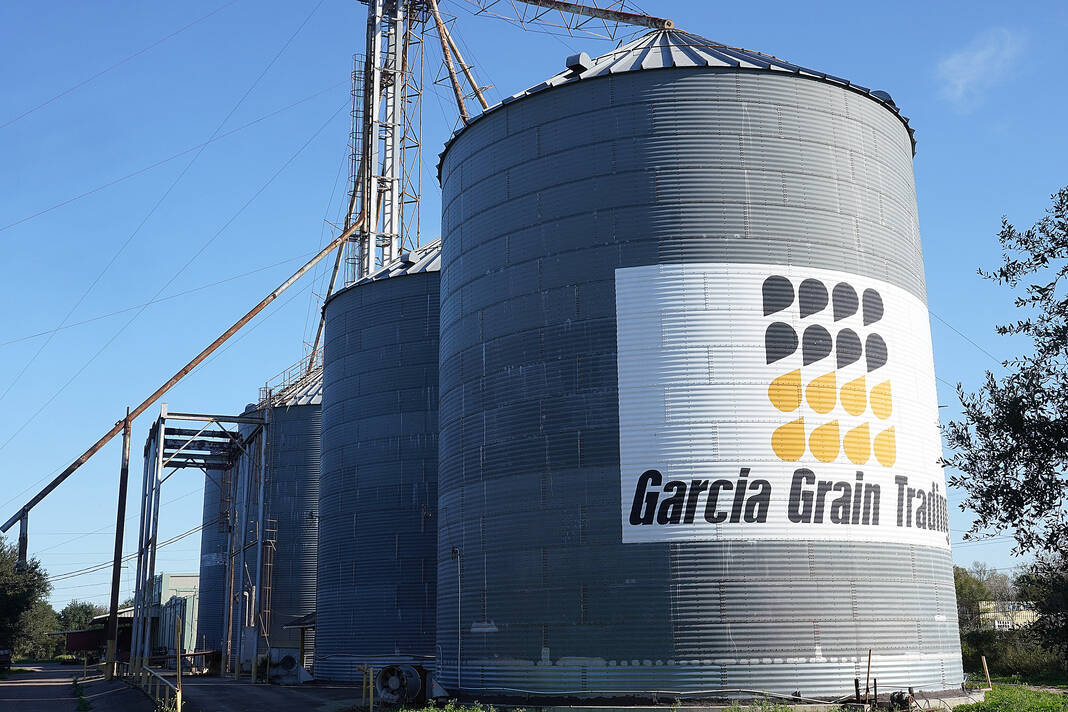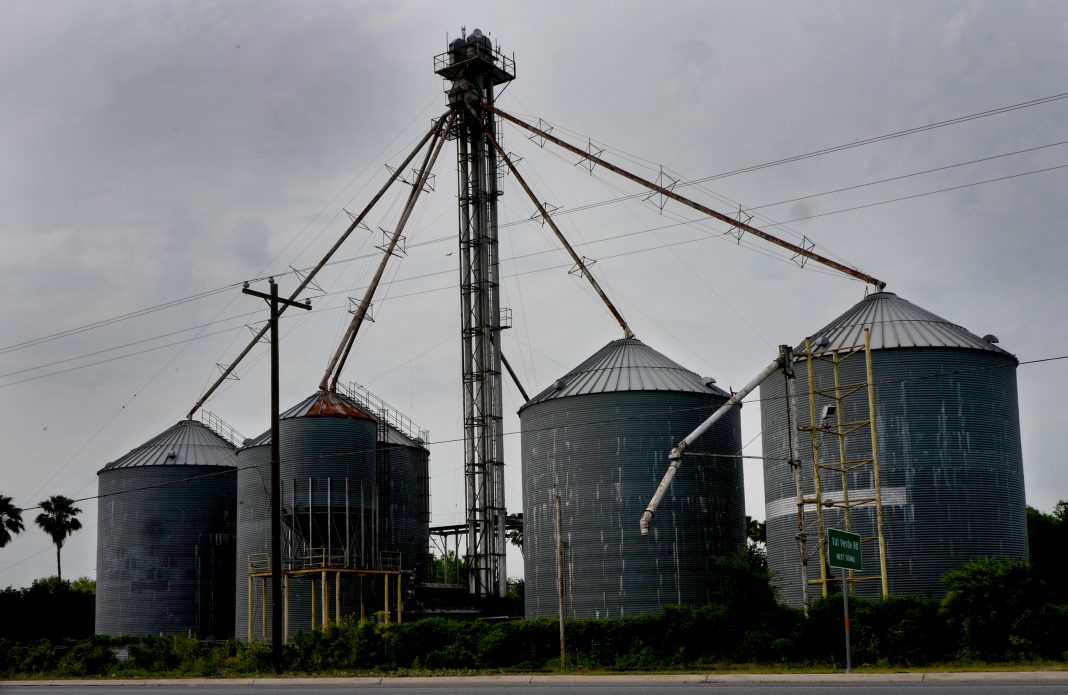|
Only have a minute? Listen instead
Getting your Trinity Audio player ready...
|
McALLEN — “Almost an impossibility.”
That’s how Chief U.S. Bankruptcy Judge Eduardo V. Rodriguez described his thoughts on the ability of Garcia Grain Trading Corporation’s to restructure after filing for Chapter 11 bankruptcy protection last February.
And he wasn’t the only one.
The company’s own attorney took one look at the massive estate — with its $50 million in liabilities and $25 million in assets — and also thought there was little hope.
“When I first took on this case, I thought it was a liquidation case, that there was no way to reorganize,” David Langston, the Lubbock attorney representing the Donna-based company, told The Monitor on Thursday.
But what had initially appeared hopeless was no longer so, as Langston stood outside the McAllen federal courthouse after achieving the impossible — confirmation of a restructuring plan that would see the majority of Garcia Grain’s debts repaid over the next five years.
“With some very creative and helpful people … coming up with new and unique approaches to financial restructuring, we were able to get it done,” Langston said.
Over the last 13 months, things have gone from hopeless to hopeful.
Under the reorganization plan, which Judge Rodriguez approved Thursday afternoon, Garcia Grain as it has existed since 1998, will be dissolved. Its largest secured creditors — StoneX Commodities Solutions, Vantage Bank and Falcon Bank — will be made mostly whole.
Meanwhile, a fourth secured creditor, McAllen-based tech company GrainChain Inc., will walk away with a sole ownership stake in the new company that emerges from the bankruptcy process.
GrainChain will manage operating agreements with two local companies — Elkins Grain LLC and Garba LLC — to continue offering grain storage and bean exports.
State records show that Octavio Garcia is the registered agent of Garba LLC.
Garcia is also the principal owner and registered agent of Garcia Grain.
“(The restructuring plan) will allow for the creation of a new company separate and apart from the old Garcia Grain Trading Corporation that will operate grain facilities — two of the grain facilities that was (sic) owned by Garcia Grain,” Langston explained.
But perhaps most importantly, the plan offers salvation for the dozens of Rio Grande Valley farmers who — as unsecured creditors — were at risk of being left in the lurch should the company have been liquidated.
Such a fire sale process would have meant that those farmers could have expected — at best — less than 2 cents on the dollar for the millions they were owed, according to a liquidation analysis conducted as part of the bankruptcy process.
Instead, restructuring into a new, viable company will allow those farmers to receive returns of between 40-80 cents on the dollar — and in some cases, a dollar-for-dollar repayment of their debts.

GARCIA GRAIN DECLARES BANKRUPTCY
Things looked radically different a year ago.
It all started last January, when state regulators with the Texas Department of Agriculture, or TDA, yanked Garcia Grain’s operating licenses. That decision put an immediate stop to the company’s ability to operate.
TDA pulled the operating licenses after discovering that Garcia Grain’s physical inventory didn’t come close to matching what was on paper in its warehouse receipts. At least $20 million in grain was unaccounted for, the TDA’s inspections revealed.
The company’s initial bankruptcy filings also showed that its net worth was deeply in the negative.
Garcia Grain held an estimated $27.63 million in assets compared to more than $50.3 million in liabilities owed to banks, farmers and other businesses, according to a March 3, 2023 filing.
More than $41 million of that debt was owed to the company’s four secured creditors, including StoneX, which, alone, was owed $19.5 million.
Meanwhile, more than $9 million was owed to Valley farmers and other agricultural companies from as far away as Minnesota.
“It’s a huge case. It’s one of the largest ones that I’ve ever seen,” Langston said.
To make matters worse, not only was Garcia Grain incapable of functioning due to TDA pulling its operating licenses, but the company had also been notified that its insurance plans, which were set to expire in May 2023, would not be renewed.
It appeared Garcia Grain had no path forward.
Things looked so hopeless that StoneX pushed hard to convert Garcia Grain’s restructuring attempts into a Chapter 7 liquidation.
By the time things shook out via forensic auditing, Garcia Grain had closer to $30 million in unaccounted for assets, Langston said.
He attributed the massive discrepancy to a combination of bad bookkeeping and “overestimating inventory and then underestimating liabilities.”
“Poor controls. Not having modern, computerized accounting systems in place that could keep up with the grain and the money,” he added.
There were also indications that some sort of criminal activity may have occurred sometime before 2021 — indications which led Judge Rodriguez to refer the matter to the U.S. Attorney’s Office for potential criminal investigation.
“There were things that indicated that in the past there had been money that had been misappropriated in Mexico,” Langston said.
“There’s certainly lots of smoke, so that’ll be something for the Justice Department to work out, ‘cause the court has referred the matter to the Justice Department,” he added.
However, Langston was unwilling to speculate on who may have done something untoward.
He also said litigation remains ongoing against one of Garcia Grain’s former co-owners, Rodolfo Plascencia.
“I’m not gonna put the finger on any one person, but there’s no question that there was a fight between the stockholders over how the money had been used and where it went,” Langston said.
“And that was a litigation that took place in state court over five years, and as you know, resulted in the conveyance of Alamo to Mr. Plascencia,” Langston added, referring to a grain elevator in Alamo that Plascencia received as part a settlement agreement in state court.

A NEW PATH FORWARD
Over the past year, the Garcia Grain case has seen a flurry of emergency motions, hastily scheduled hearings, and thousands of pages of court filings.
“This plan and this case, from the very beginning, has been tumultuous and very contested, and I had my doubts along the way,” Rodriguez, the bankruptcy judge, said at the conclusion of Thursday’s hearing.
Not only had Garcia Grain’s largest creditor been skeptical of a positive outcome, but so had Rodriguez.
On numerous occasions, he questioned what the attorneys in the case were doing and expressed concerns that no one would be held fiduciarily responsible.
Those concerns persisted as recently as March 15, when Rodriguez called for a hearing in order to have the attorneys explain how the proposed plan would work.
Through an agreement with its creditors, including the committee representing local farmers, Garcia Grain had, in July 2023, hired a retired bankruptcy judge, Richard Schmidt, to try to mediate a path forward.
Schmidt was later appointed to serve as the chief restructuring officer, or CRO, in the case.
Part of his duties as CRO included managing Garcia Grain’s day-to-day operations, and keeping track of all its finances.
“After that hearing, I was convinced that the debtor has, under the direction of the CRO, has done a fantastic job in putting this plan together — almost an impossibility,” Rodriguez said.
Moving forward, Schmidt will continue to play a role, but now as the so-called “plan agent” administering the restructuring process over the next five years.
“I have confidence in the CRO in administering this plan, and I think without that, it would be much more difficult to confirm this plan,” Rodriguez said.
“I see these processes in place that can only foster a feasible plan going forward with assurances that such financial disasters will not occur in the future,” he added a moment later.




